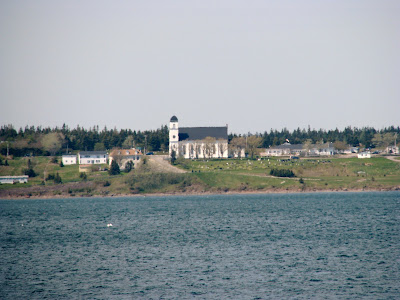.
That's what they sing to me every time
they see me!
It is the
Yellow Warbler
Dendroica petechia
Finally, a day made to order here on the island.
Even as the afternoon wind picks up, today from the NW,
it's a warm wind.
and I am always delighted to welcome them home,
to step out the door each morning to be greeted
by their cheery call.
Peterson's Field Guide describes them as being
the yellowest of all warblers. "Even the tail spots
are yellow (white in many other species)."
Sadly, Yellow Warblers are among the most frequent victims
of
cowbird parasitism. But, unlike many other birds,
they can quickly recognize these rogue eggs,
and will either abandon their nests,
or will rebuild right over the unwelcome eggs,
sometimes persistently over and over again.
There are no cowbirds here, however, so it isn't a problem for my little family.
Their diet consists mostly of insects and spiders, but they will also
eat a few berries now and then.
Today, the Yellow Warbler shared it's space with a visitor
who was just passing through!
Blackpoll Warbler
(Dendroica striata)
I couldn't miss the unmistakable shrill, high-pitched trill of this beauty!
And I knew instantly to go take a peek among
the budding branches of the tamarack and maple.
before continuing along it's journey.
I have found them nesting in the white spruce of the heath and scrub
of a beach approximately an hours ride from here.
"The Blackpoll is the greatest warbler migrant: weighing less than a wet teabag, eastern migrants are known to fly south over the Atlantic, leaving land on the east coast of Newfoundland and not resting until they reach the northern coast of Venezuela. In a single year, a Blackpoll Warbler may fly as far as 24,000 kilometres!"
Source: Birds of Atlantic Canada, Roger Burrows
They certainly are welcomed visitors to my yard!!
As are all Camera Critters! To see more,
.






.jpg)





















.jpg)
